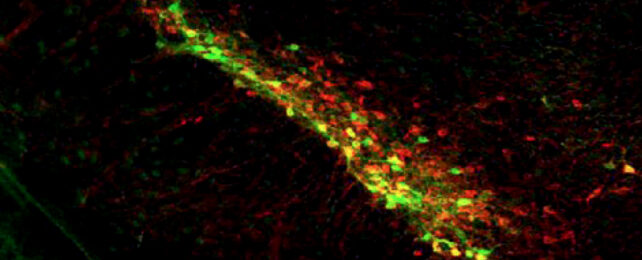Dopamine is your brain's way of saying "job well done". Whether it's a winning hand of cards or nibbling on a favorite sweet treat, it's the neurotransmitter dopamine unlocking its own class of neuron that generates that sparkle of joy.
Scientists have suspected the nerve cells that react to this happy little hormone might come in more than one variety, some of which might play a role in functions other than pure reward.
An investigation led by researchers from Northwestern University in the US has recently uncovered three distinct subtypes of dopamine-reactive neurons in a part of the brain called the substantia nigra pars compacta (SNc), a region that has roles in processing movement as well as reward responses.
Characterized by individual expression of one of three different genes, each subtype reacts distinctly to either satisfying experiences, unpleasant stimuli, or changes in speed, providing the first solid evidence of dopamine neurons that don't simply reinforce behavior by tickling our pleasure zone.
In some ways, the finding might not come as a complete shock. After all, the substantia nigra is ground zero for Parkinson's disease. A loss of its dopamine-sensitive neurons is associated with the condition's signature symptoms, which include rigidity, slowness, and tremors.
Strangely, the loss of these nerve cells doesn't necessarily result in a loss of rewarding feelings following a successful or joyful task. So it's been unclear until now if the neurons that respond to the hormone generally have more than one job, or if different cells are each responsible for their own function.
"We found a subtype that are motor signaling without any reward response, and they sit right where dopamine neurons first die in Parkinson's disease," said Daniel Dombeck, a neurobiologist who co-led the study.
"That's just another hint and clue that seems to suggest that there's some genetic subtype that's more susceptible to degradation over time as people age."
Though Dombeck's lab had uncovered dopamine neurons that governed movement previously, they assumed this handful of cells were simply moonlighting in motion, with reward response still their primary occupation.
To put this assumption to the test, his team focused on three key genes known to operate within the cells: Slc17a6, Calb1, and Anxa1, tagging transgenic mouse neurons in a way that would allow them to glow when each of the genes were active.
They found roughly 30 percent of the dopamine-reactive neurons lit up whenever the mice moved, leaving responses to aversive or rewarding behaviors to the remaining nerve cells.
"This genetic subtype is correlated with acceleration," said fellow neurobiologist and co-lead author Rajeshwar Awatramani.
"Whenever the mouse accelerated, we saw activity, but in contrast we did not see activity in response to a rewarding stimulus."
The researchers speculate the loss of these accelerator-specific dopamine neurons could be creating an imbalance in the brain that could be behind Parkinson's shaking movements. Left only with neurons that govern deceleration, the brain might be forcing muscles to come to a stop.
More research is needed to tease out just how each specific subclass of dopamine nerve cell operates, and why some are more prone to damage than others.
"We're still trying to figure out what this all means," said Awatramani.
"I would say this is a starting point. It's a new way of thinking about the brain in Parkinson's."
This research was published in Nature Neuroscience.
A version of this article was first published in August 2023.
